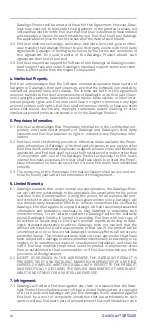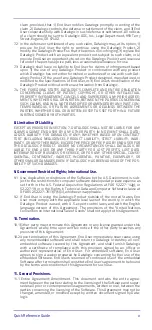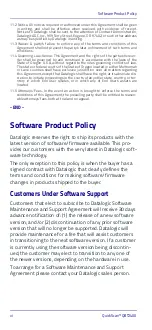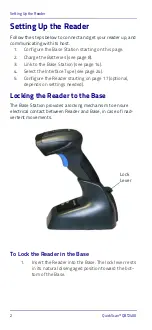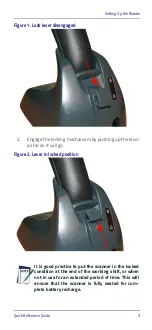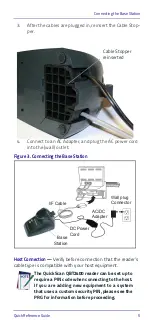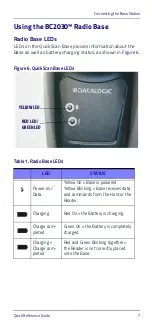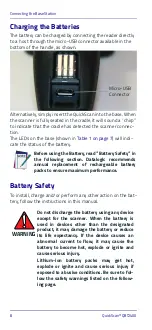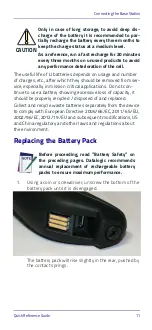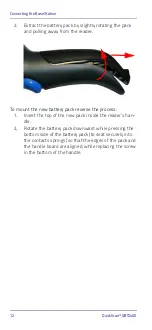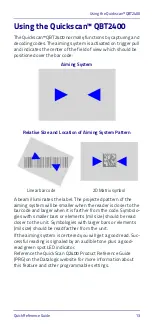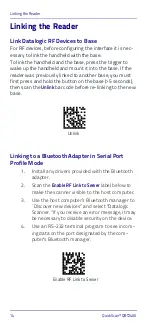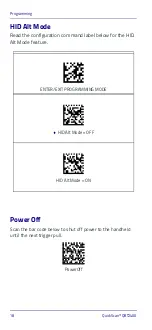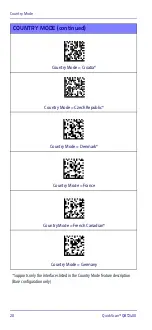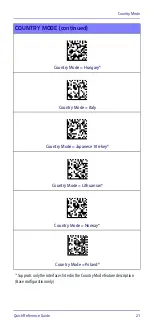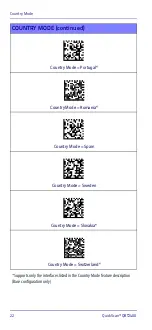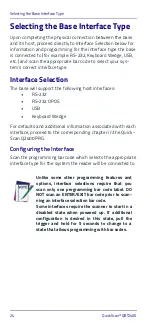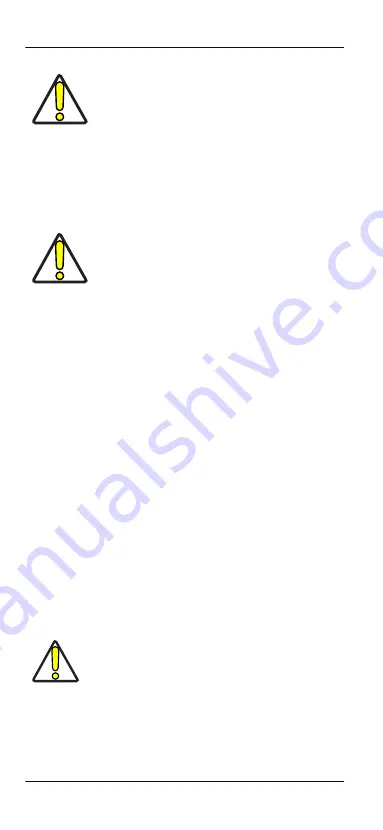
Connecting the Base Station
10
QuickScan™ QBT2400
As with other battery types, Lithium-Ion (LI) batteries will lose
capacity over time. Capacity deterioration is noticeable after
one year of service whether the battery is in use or not. It is
difficult to precisely predict the finite life of a LI battery, but
cell manufacturers rate them at 500 charge cycles. In other
words, the batteries should be expected to take 500 full dis-
charge/charge cycles before needing replacement. This num-
ber is higher if partial discharging/recharging is adhered to
rather than full/deep discharging.
CAUTION
Do not place the battery in or near fire, on
stoves or other high temperature locations.
Do not place the battery in direct sunlight, or
use or store the battery inside cars in hot
weather. Doing so may cause the battery to
generate heat, explode or ignite. Using the
battery in this manner may also result in a
loss of performance and a shortened life
expectancy.
CAUTION
Do not place the battery in microwave ovens,
high-pressure containers or on induction
cookware.
Immediately discontinue use of the battery if,
while using, charging or storing the battery,
the battery emits an unusual smell, feels hot,
changes color or shape, or appears abnormal
in any other way.
Do not replace the battery pack when the
device is turned on.
Do not remove or damage the battery pack’s
label.
Do not use the battery pack if it is damaged in
any part.
Battery pack usage by children should be
supervised.
CAUTION
Storage of batteries for a long time at fully
charged status or at fully discharged status
should be avoided.



